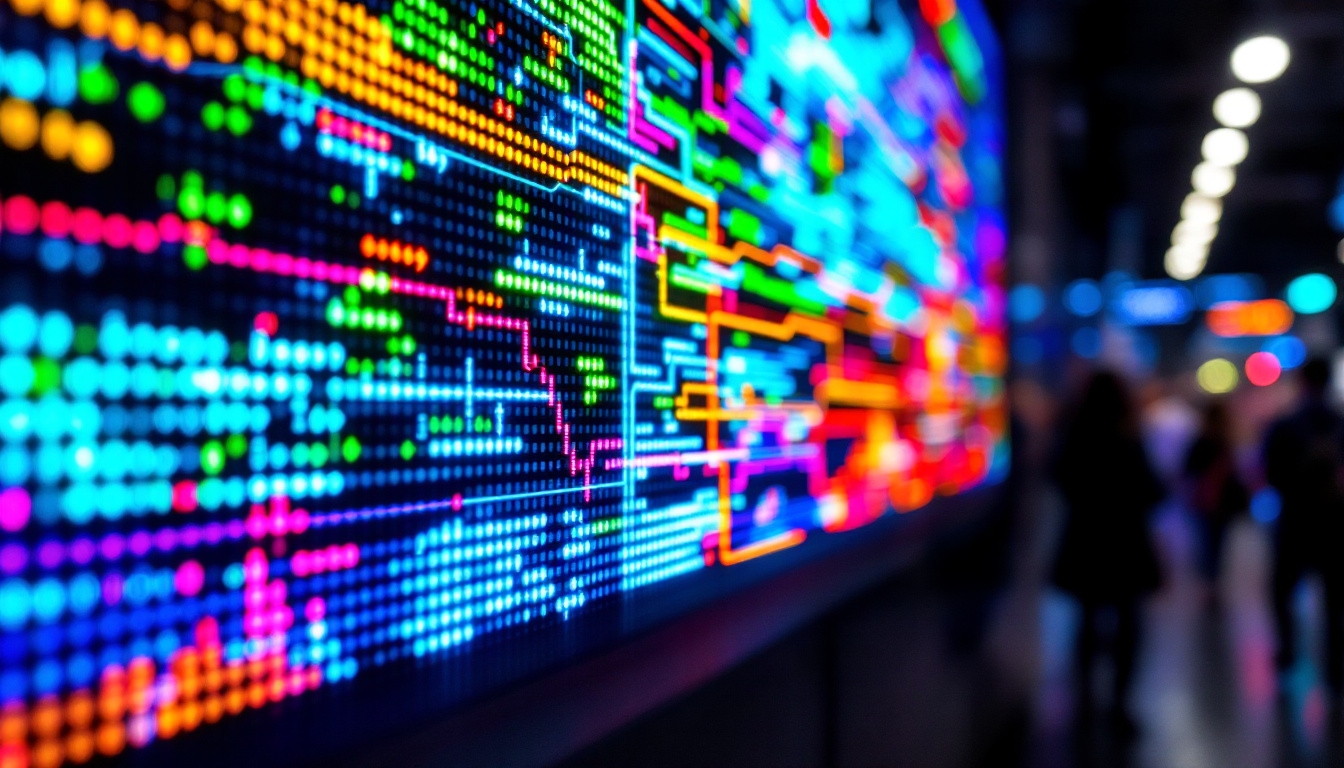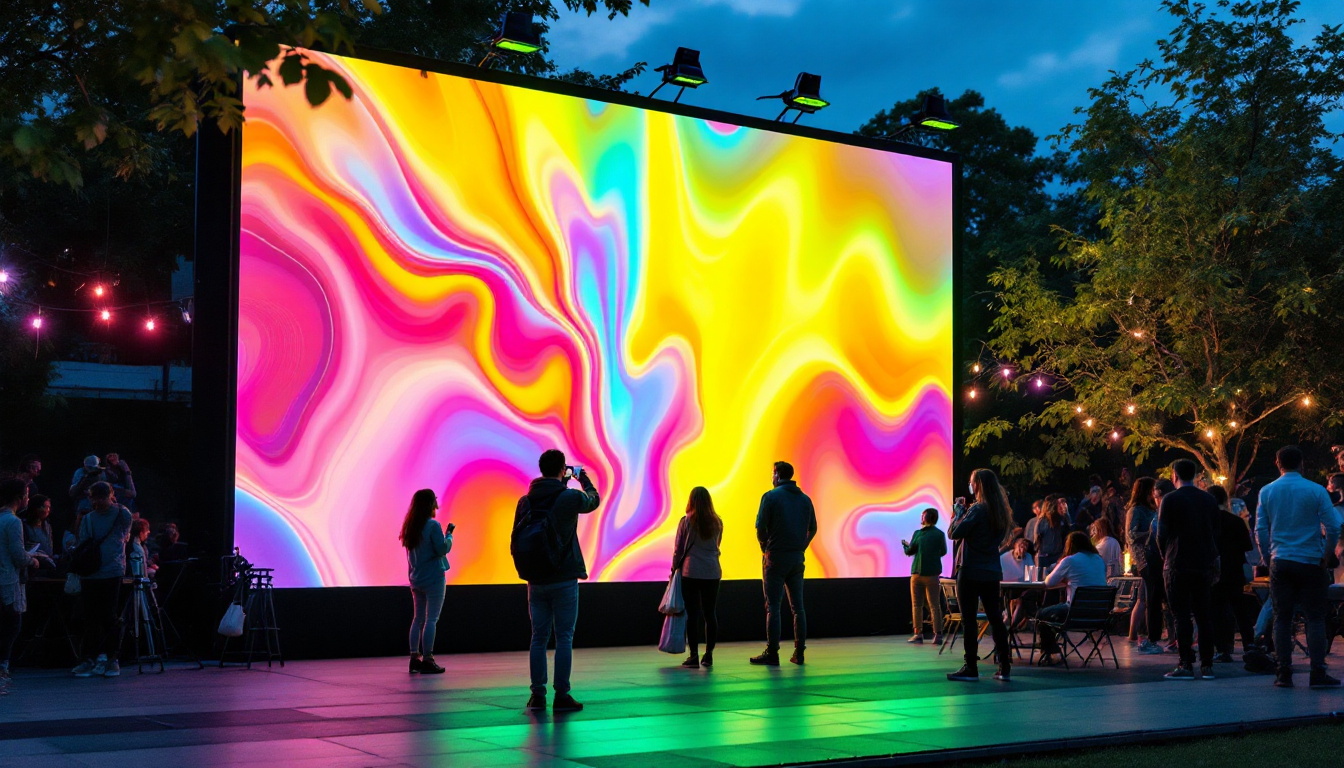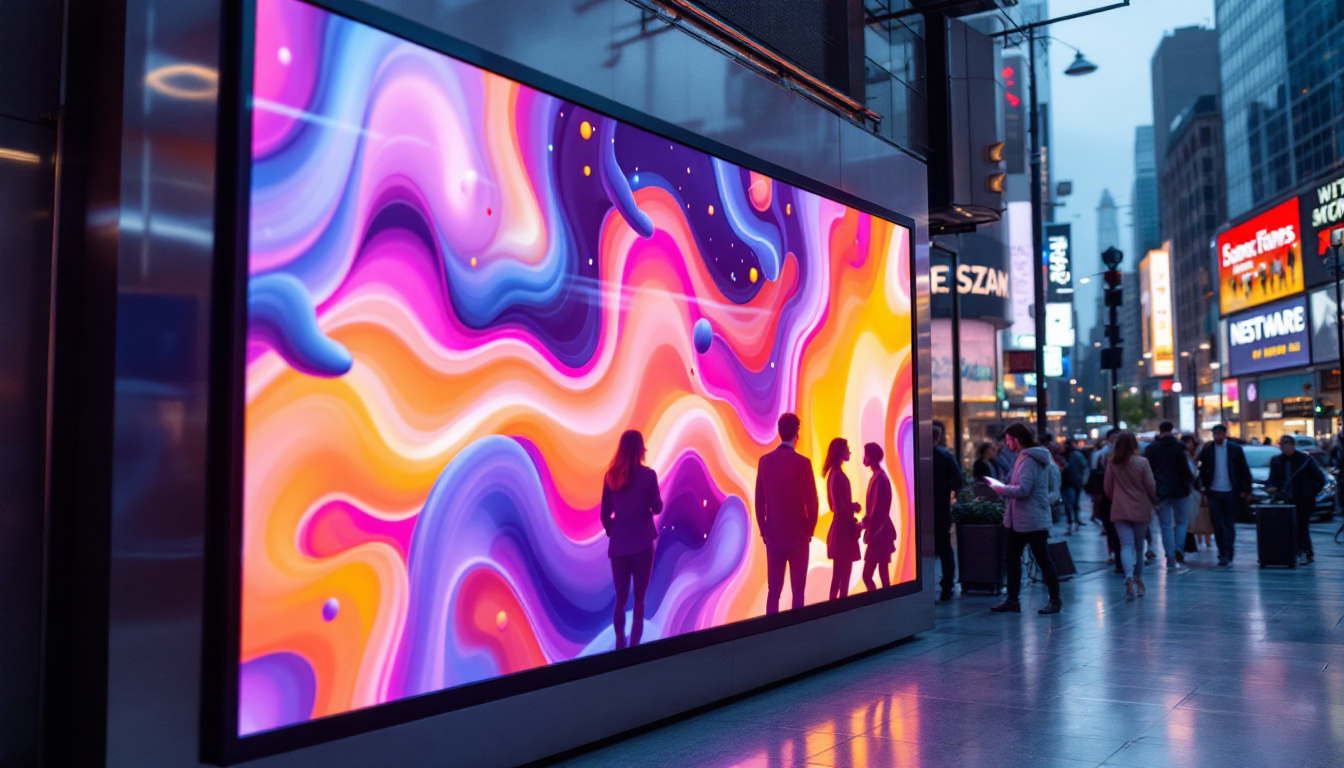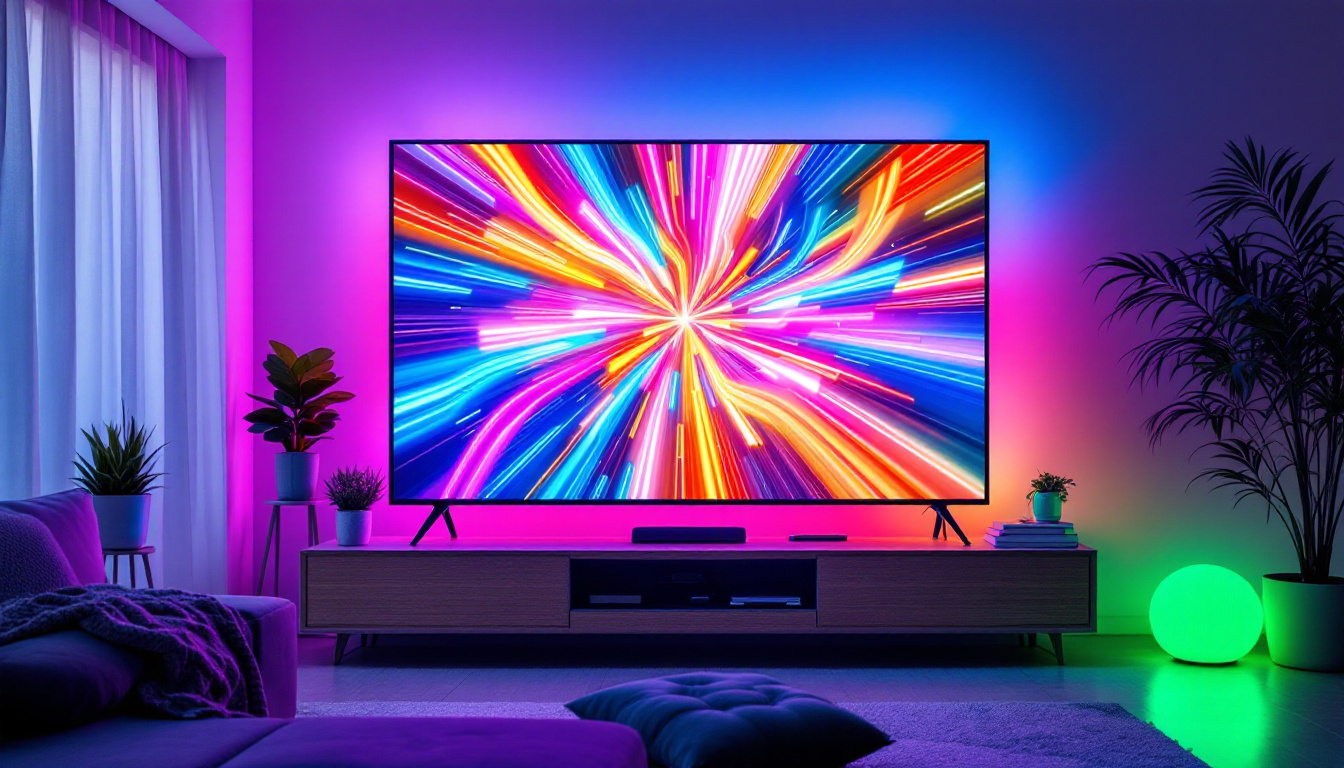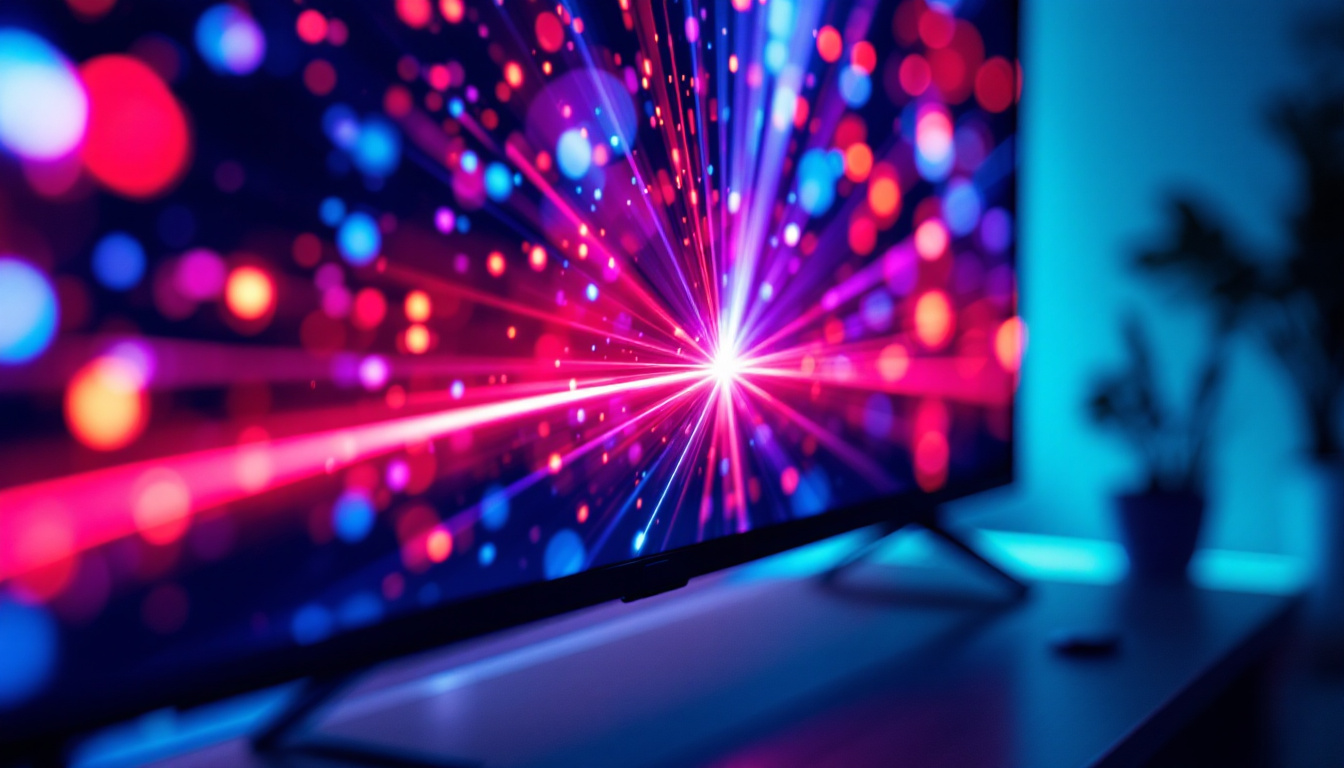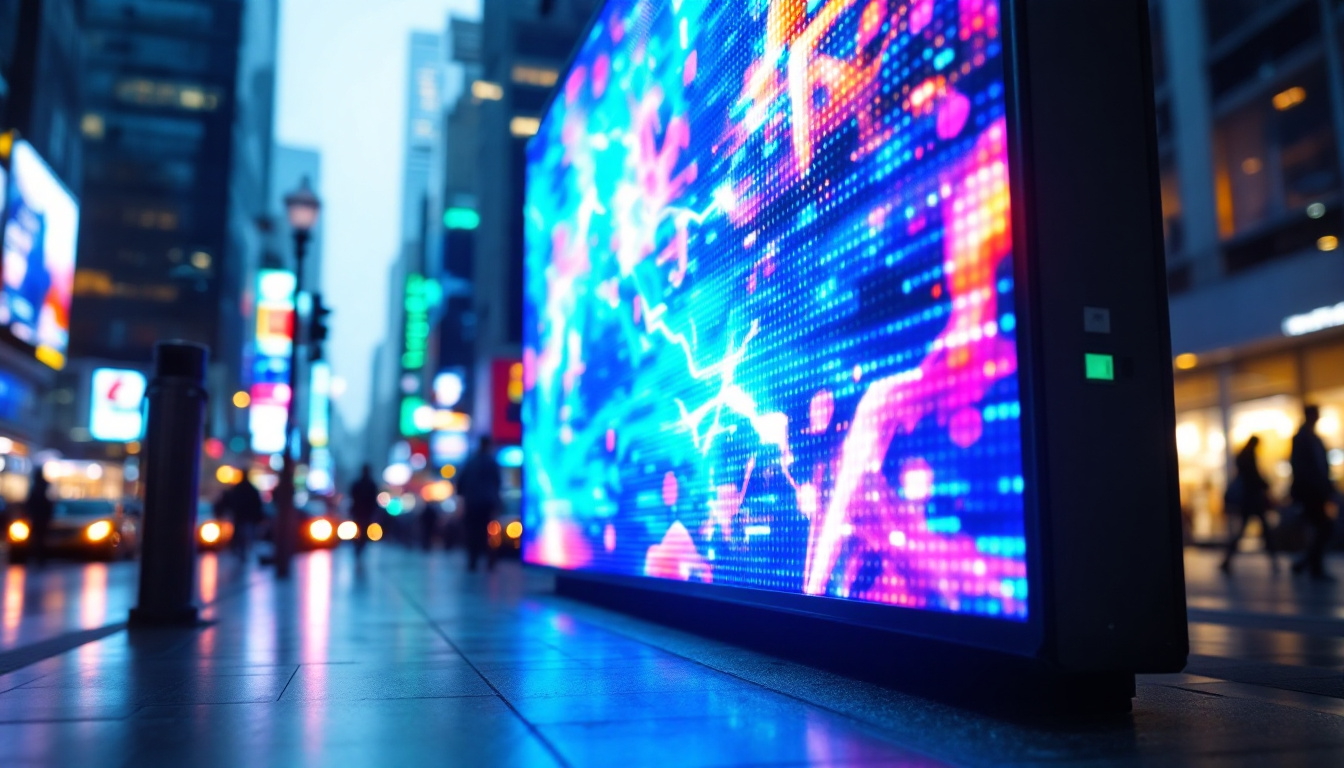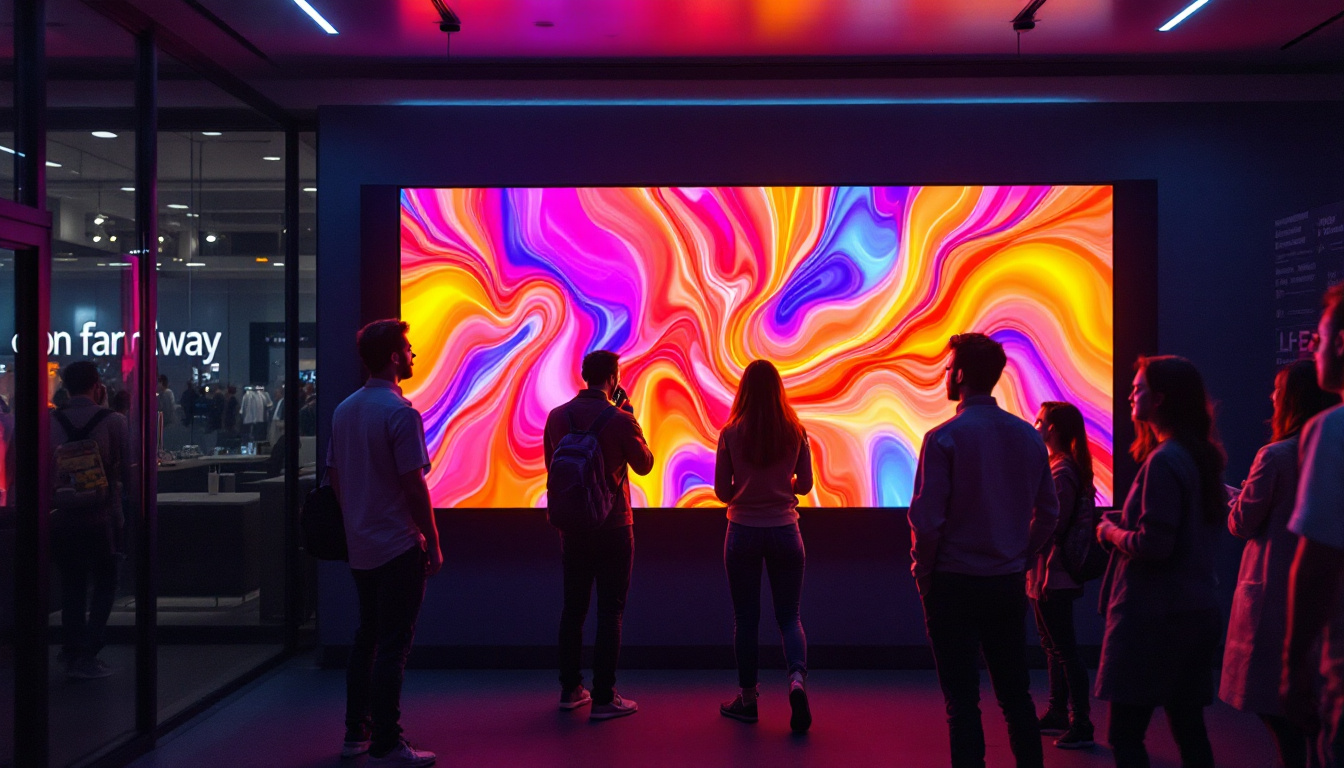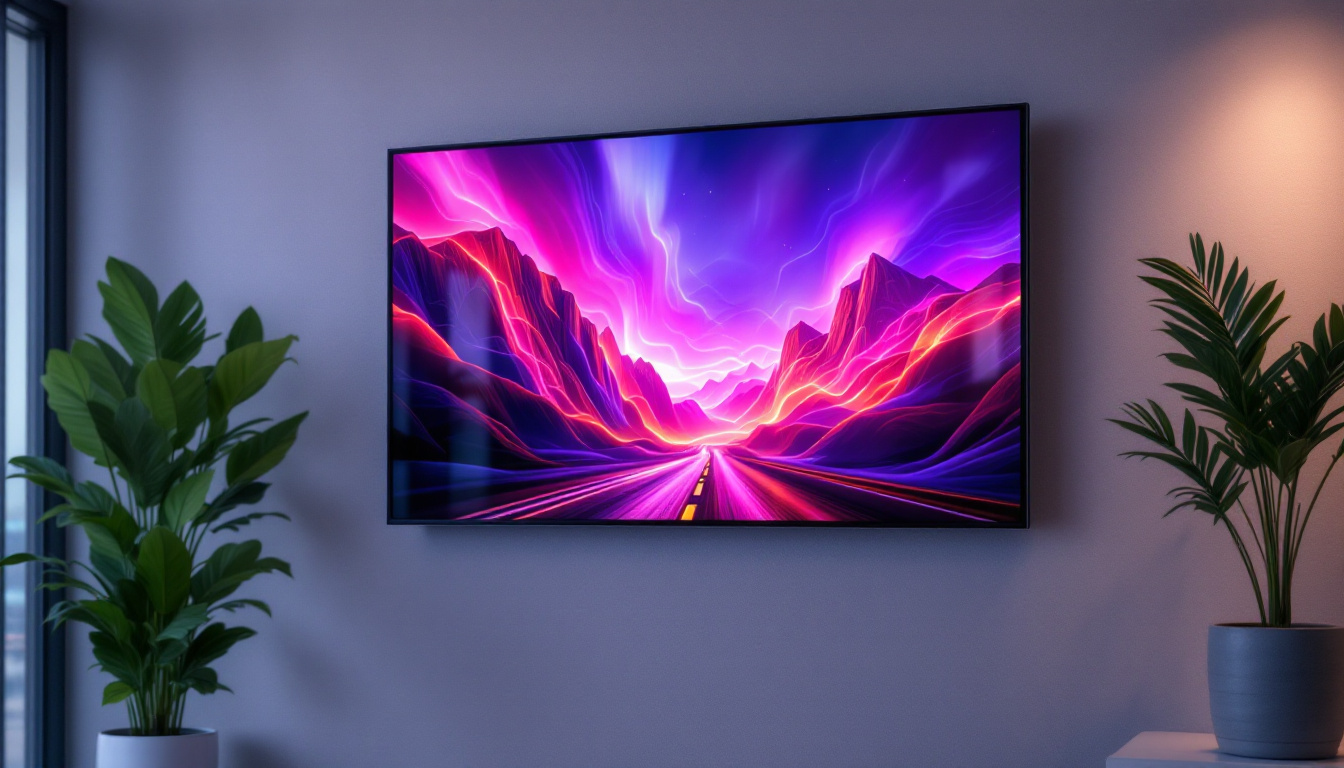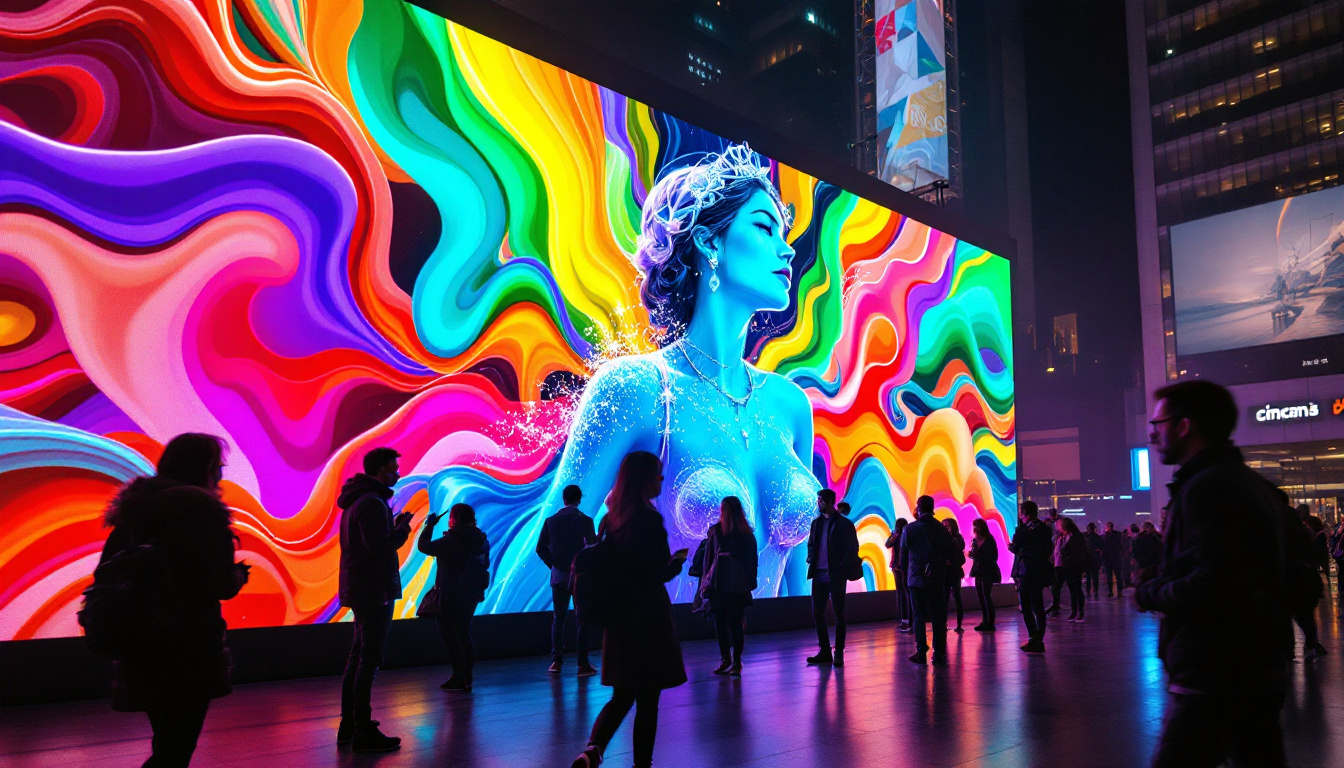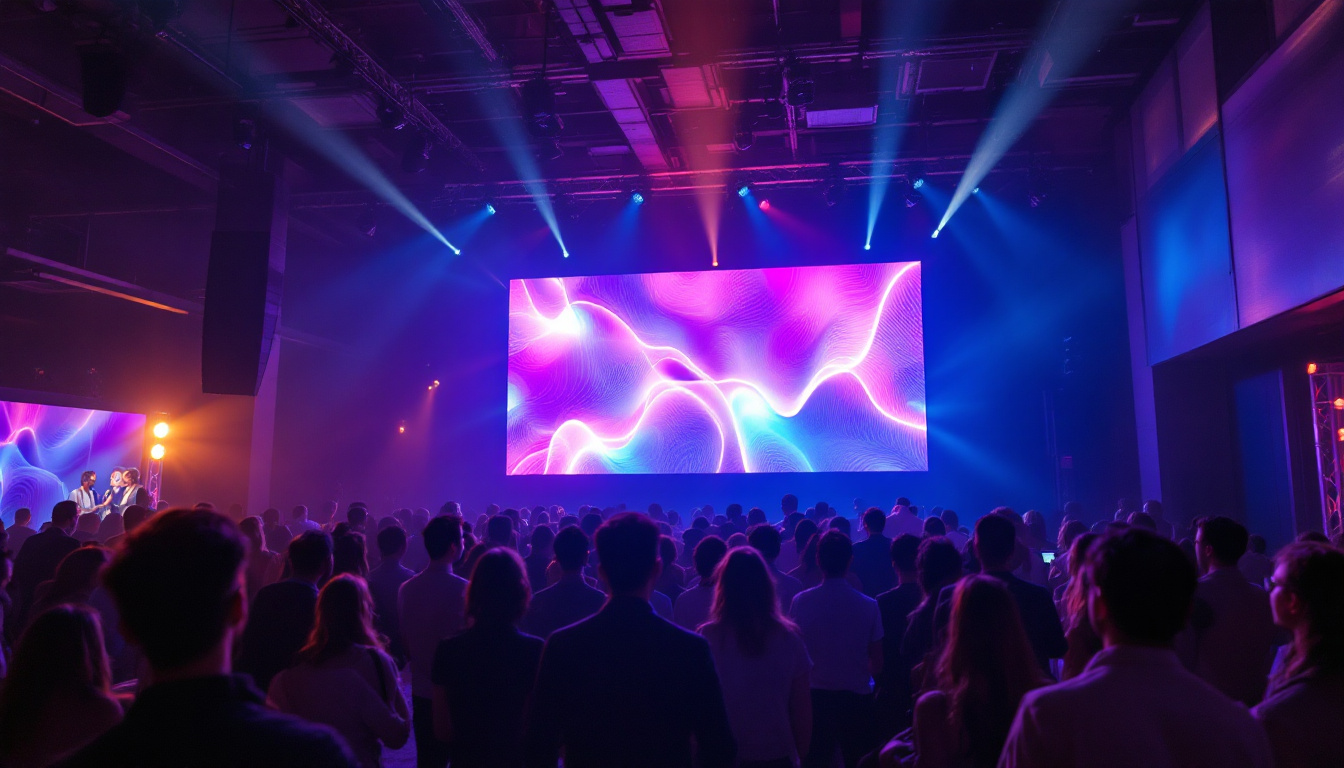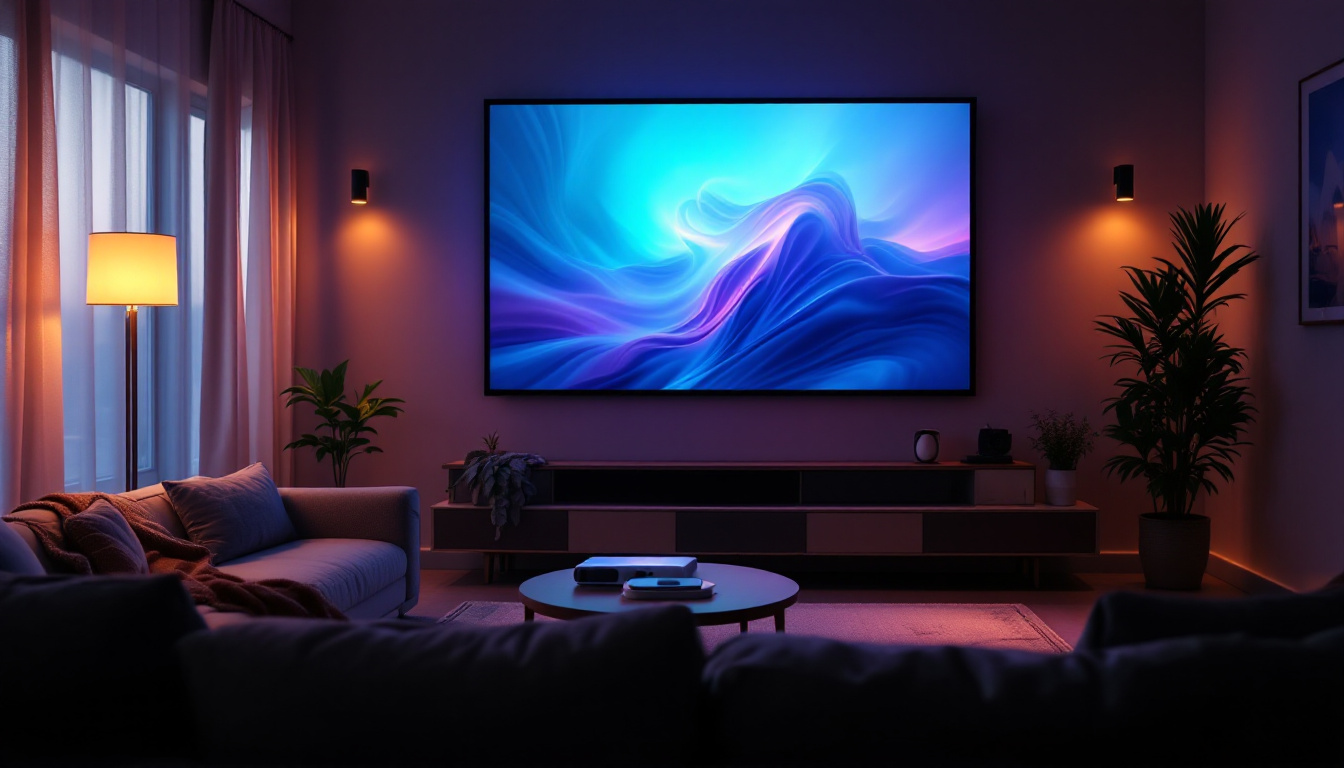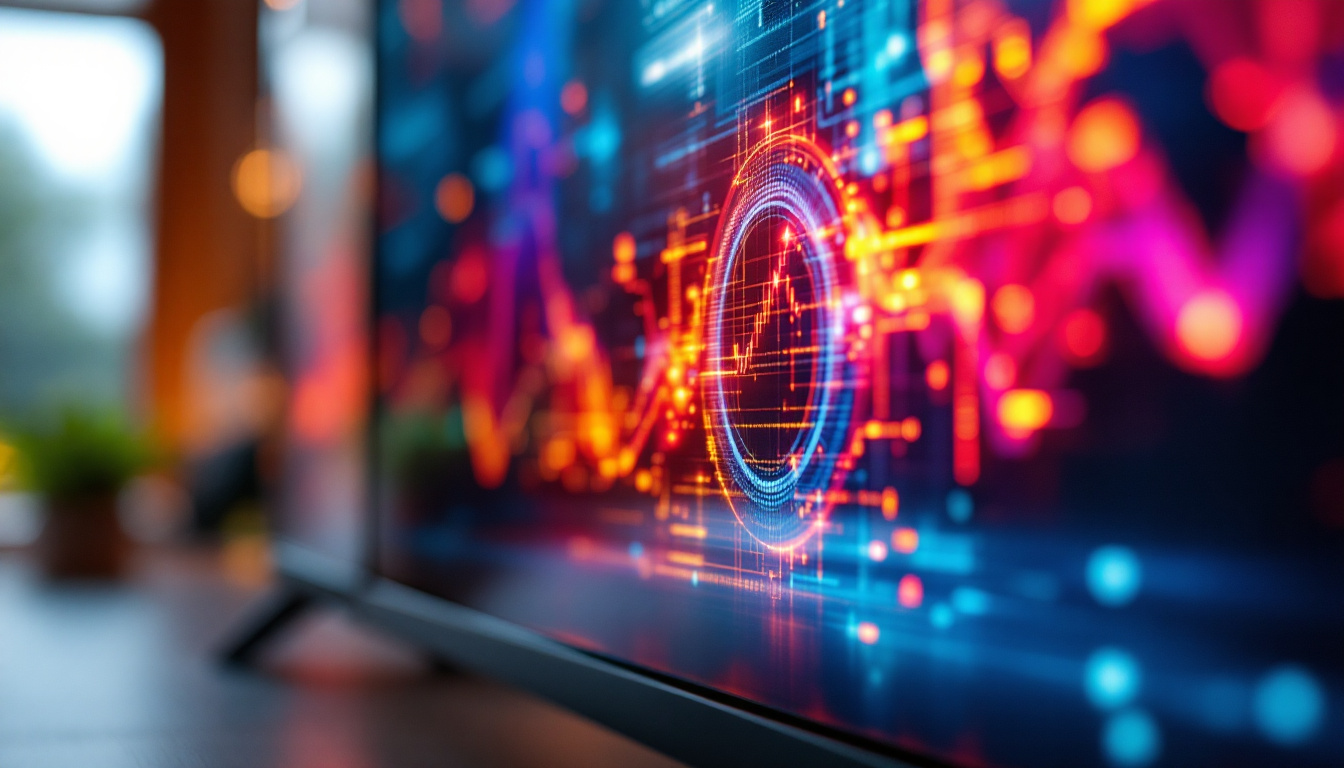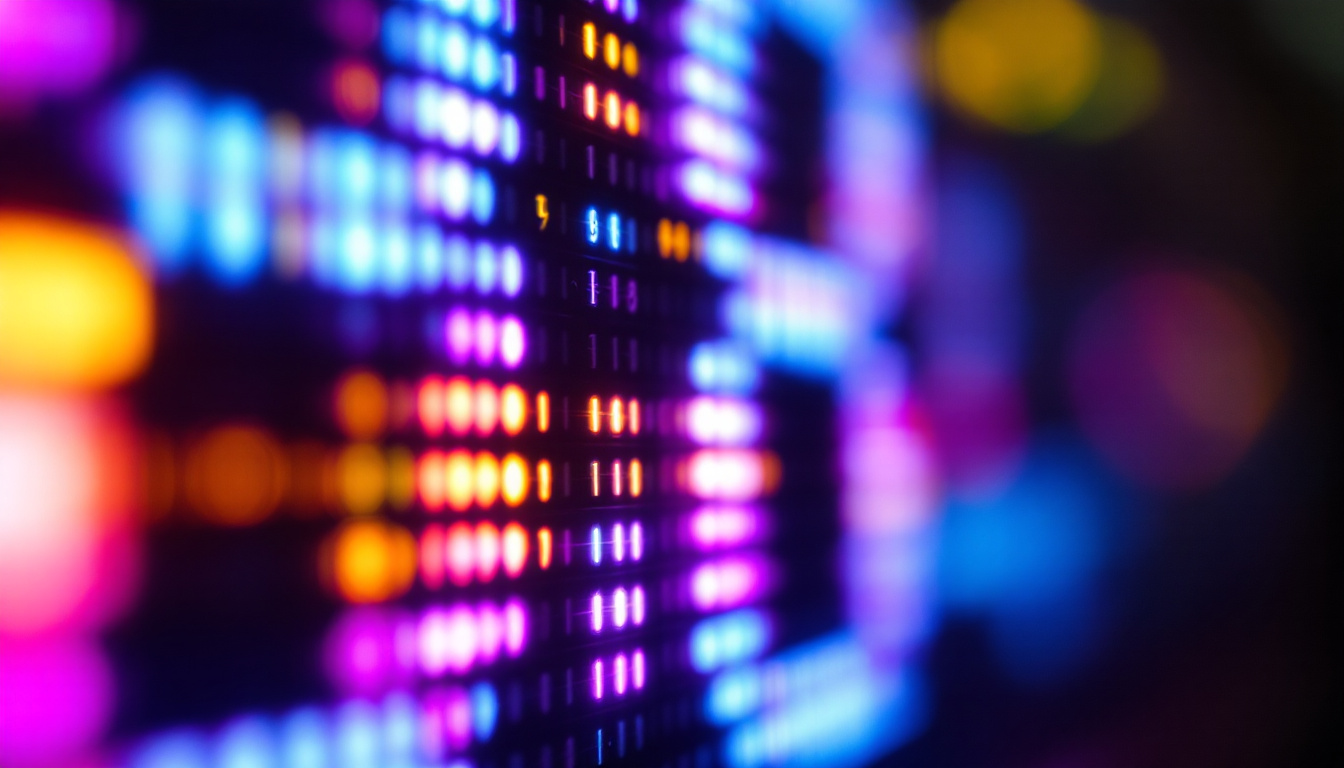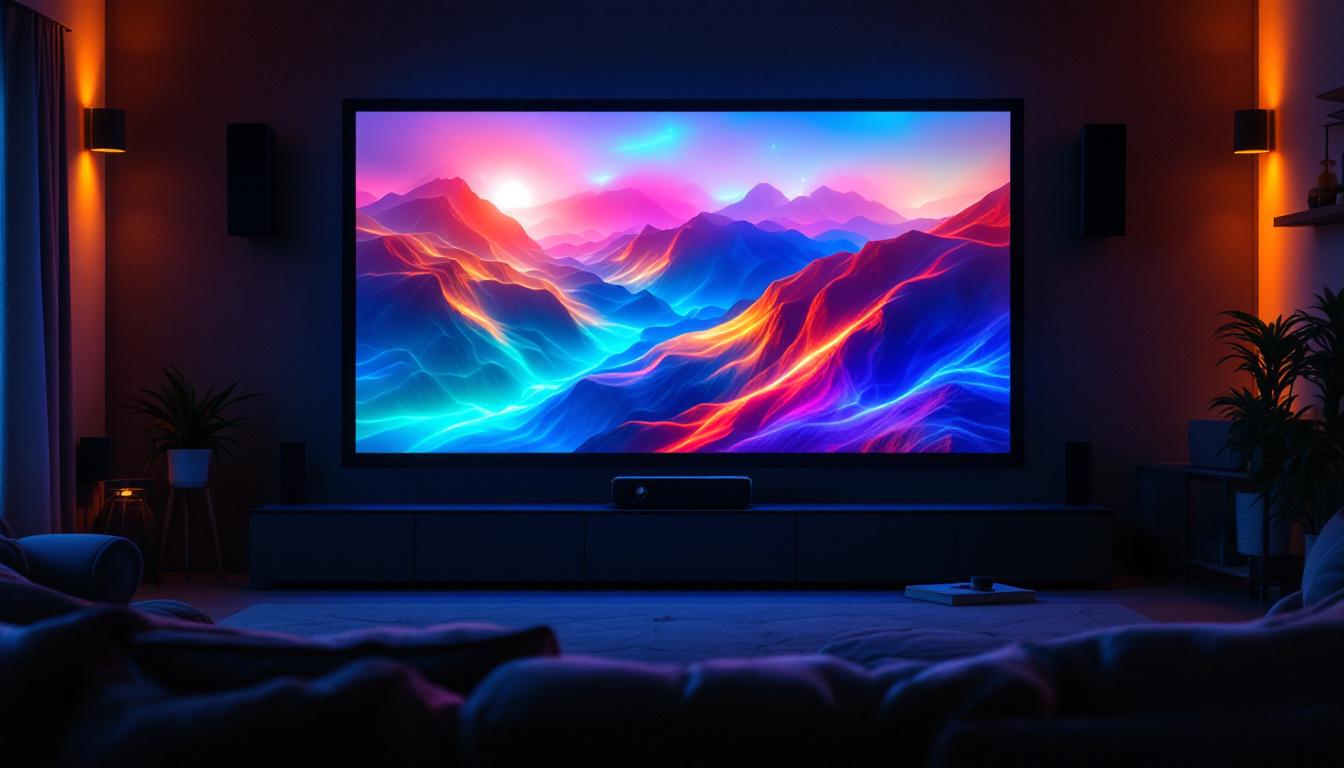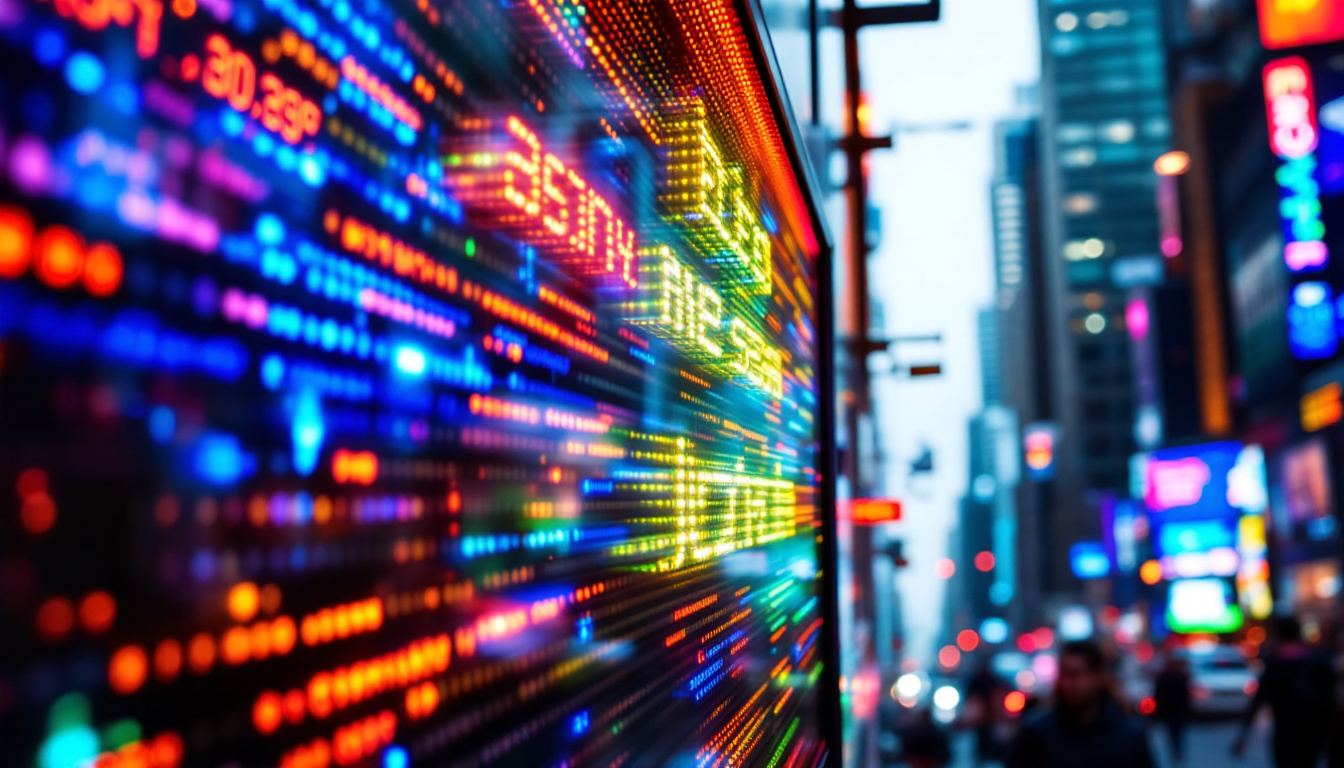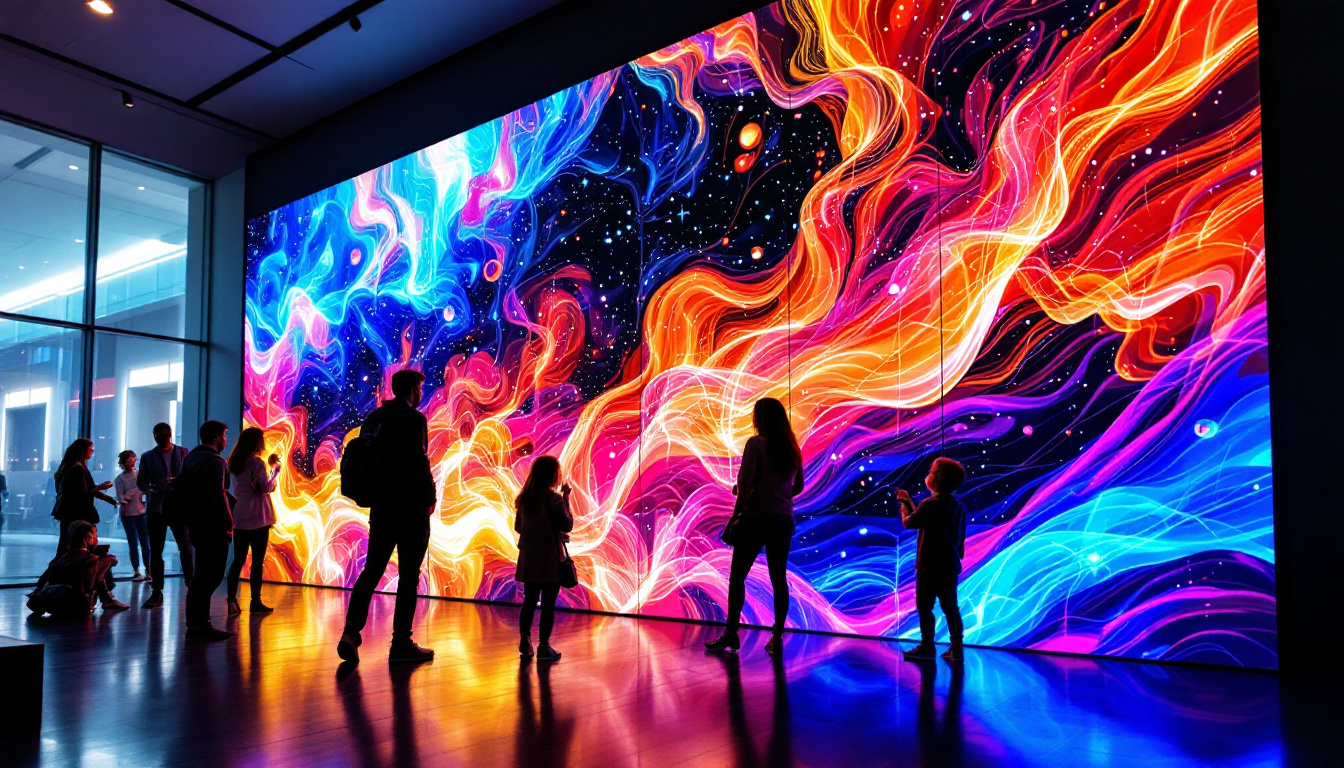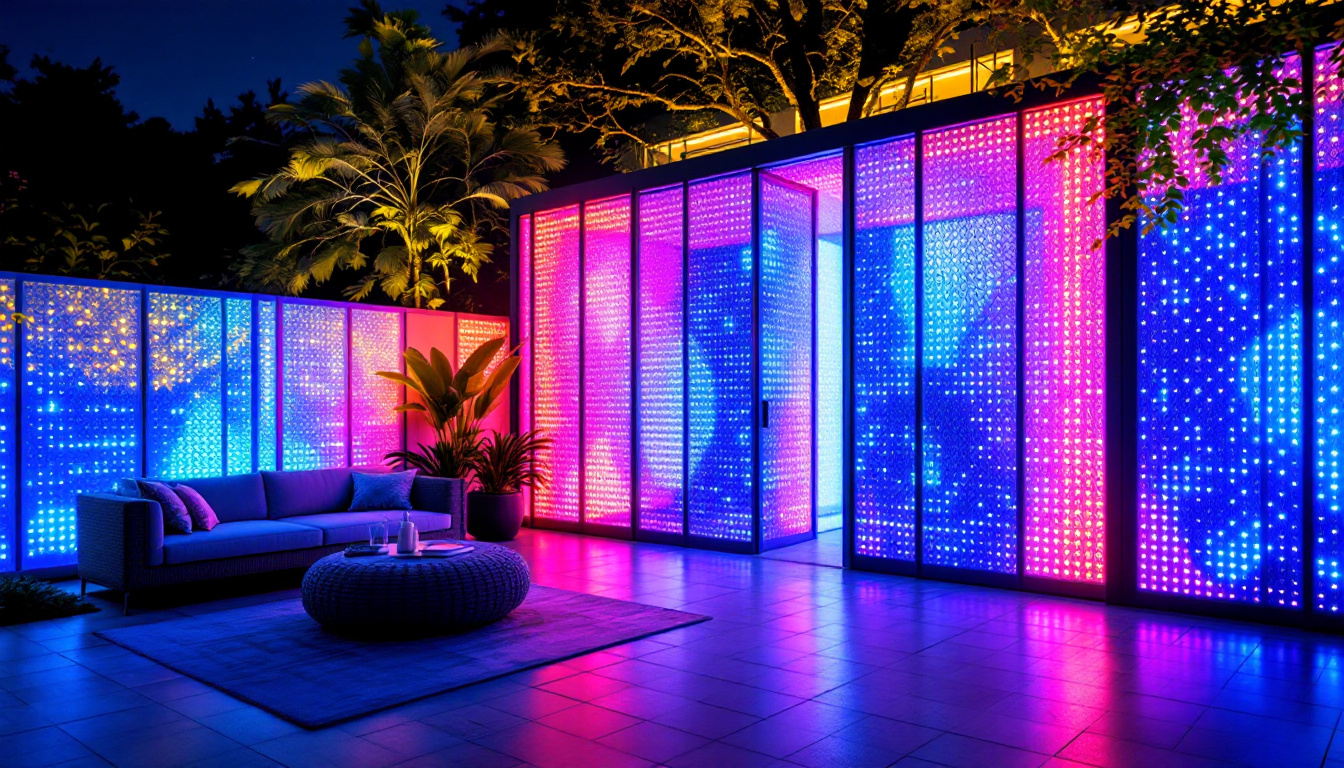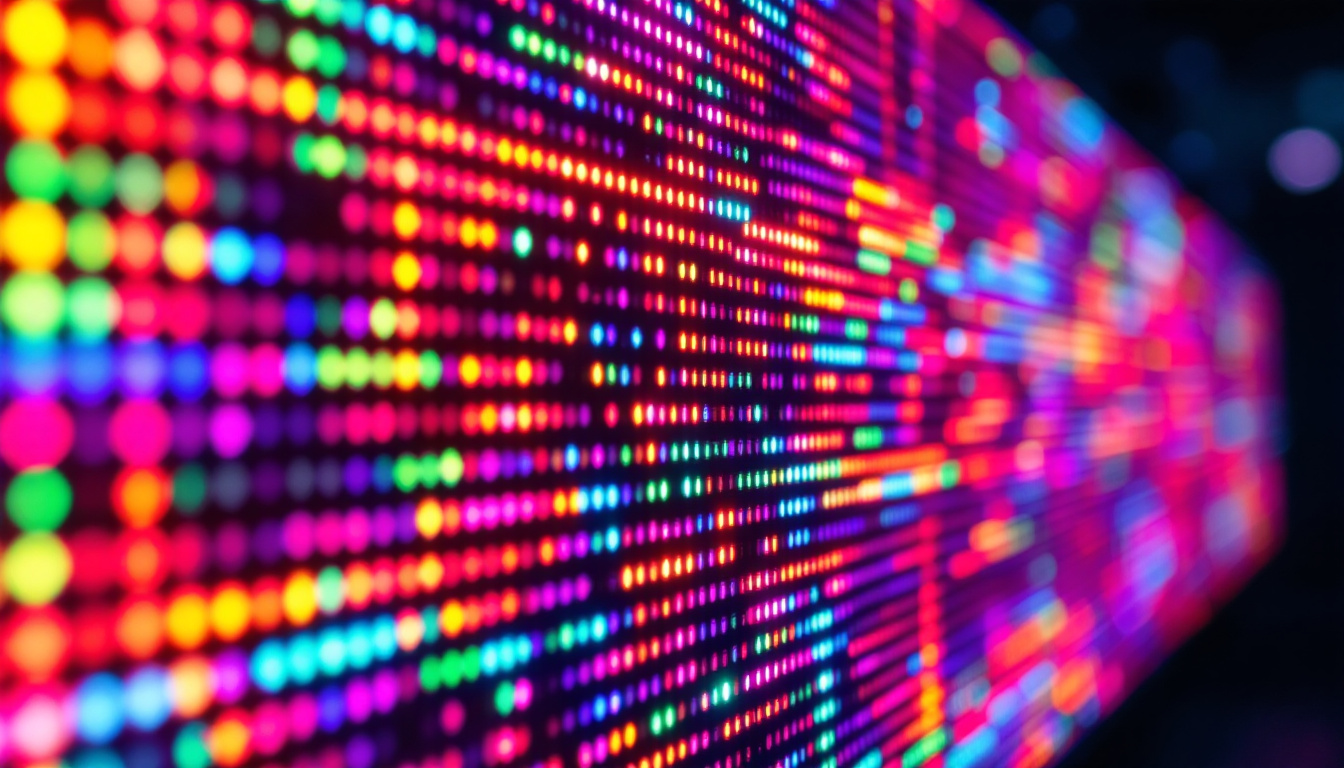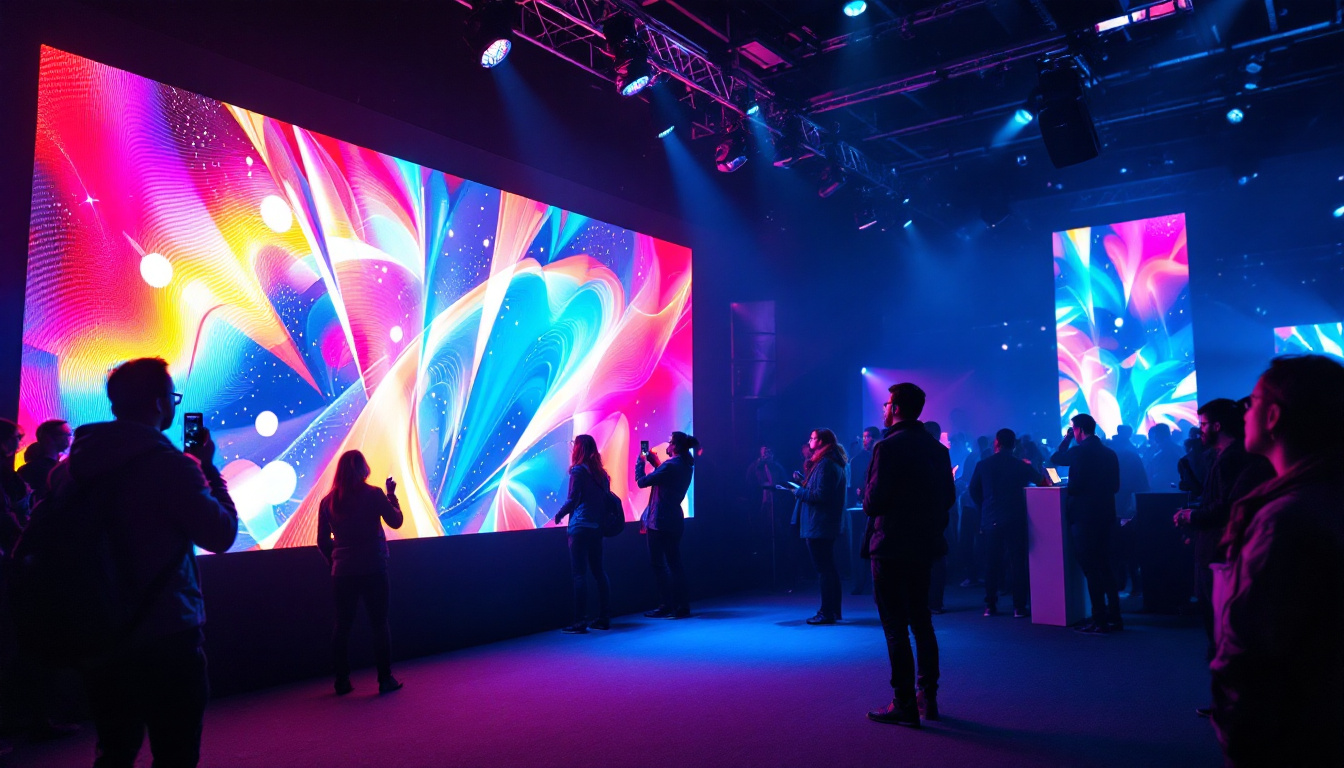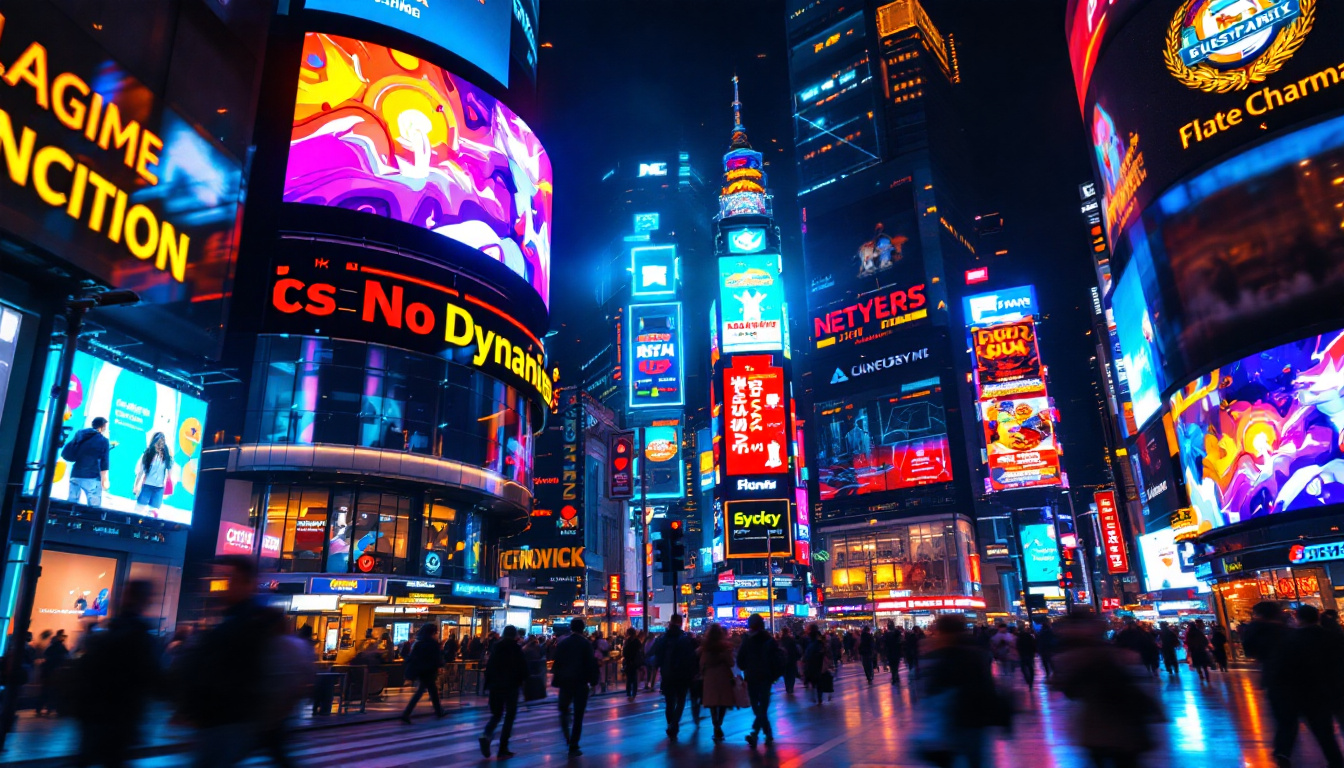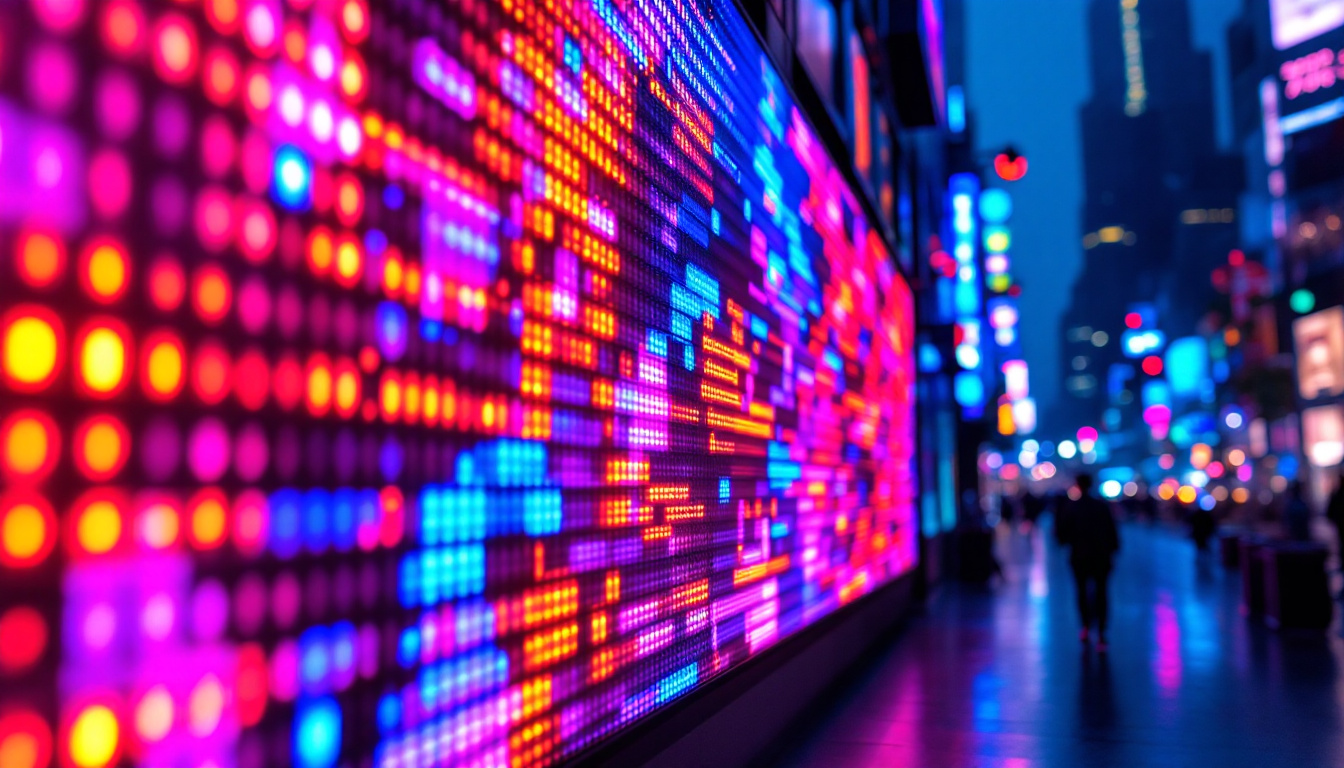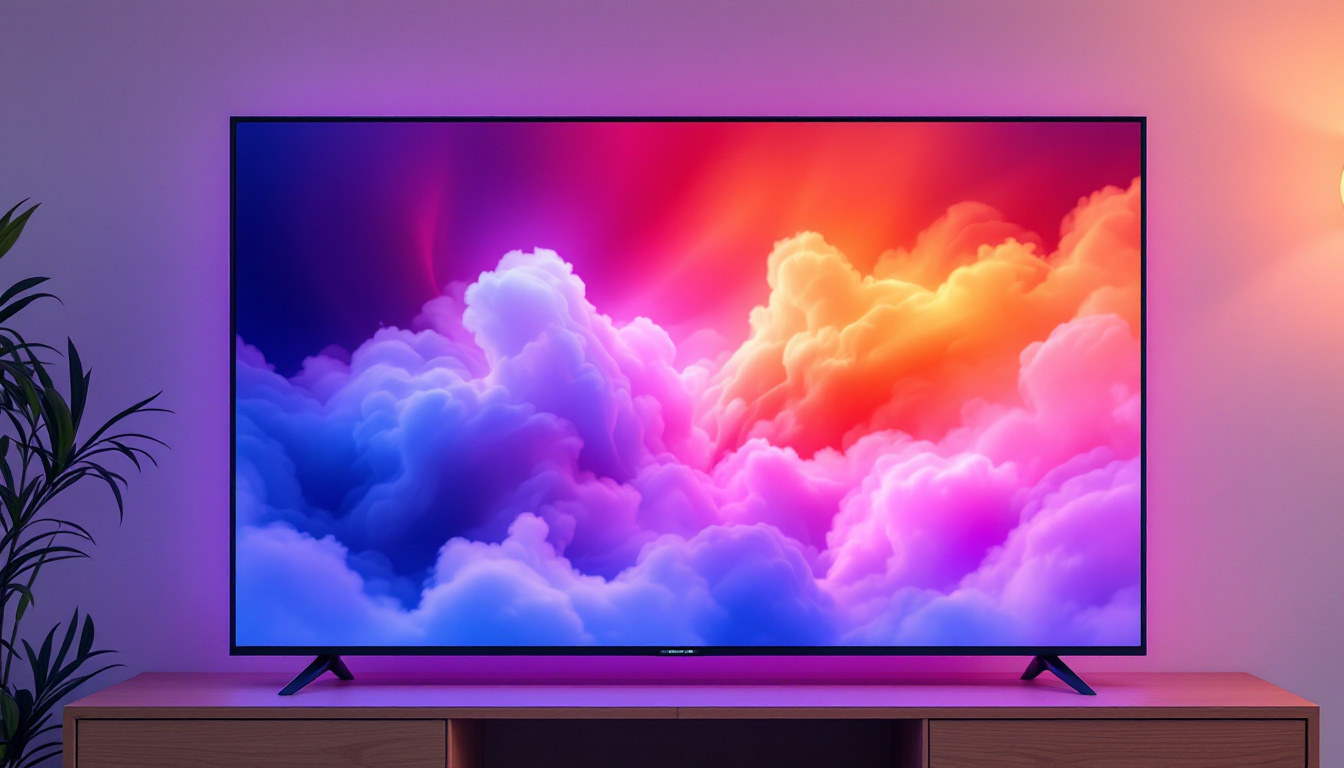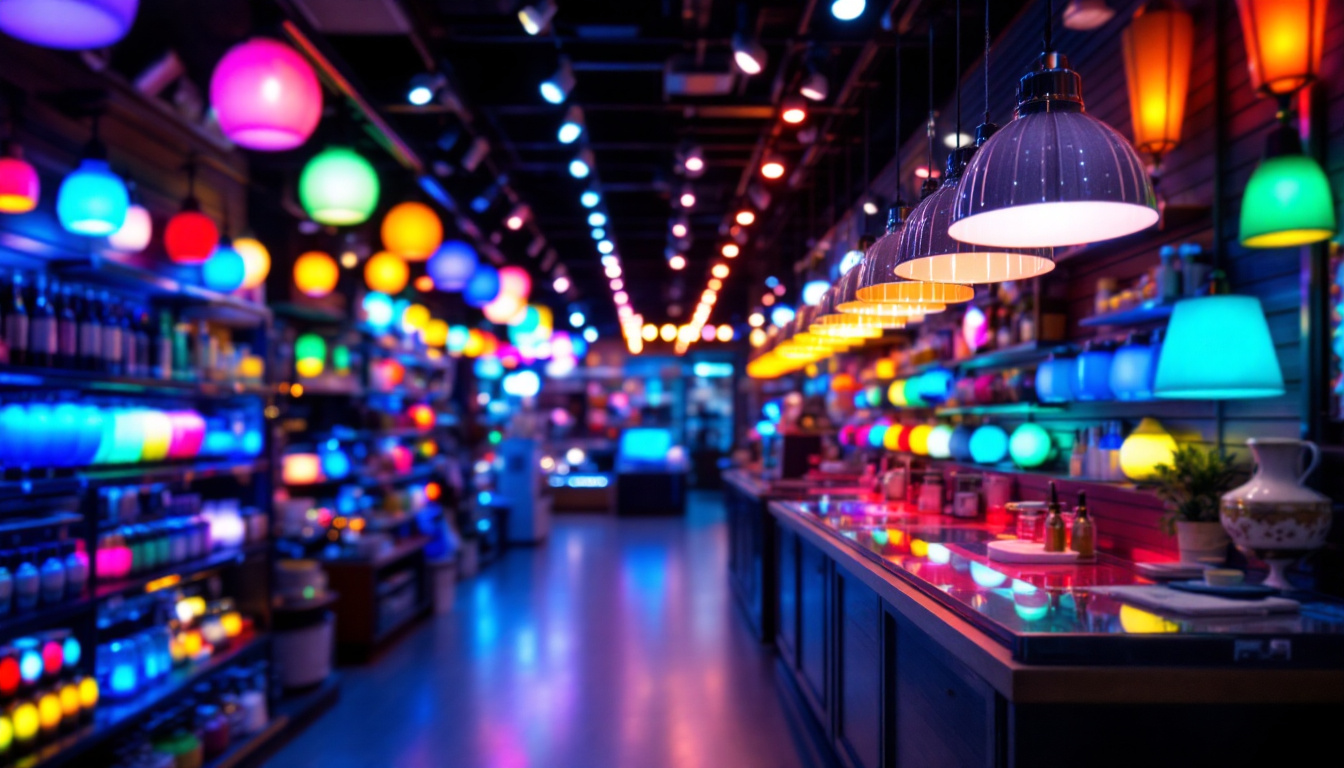In the world of modern technology, LED displays have become ubiquitous, serving as the backbone for a multitude of devices, from smartphones to large-scale advertising billboards. Understanding how these displays work and their various applications can provide valuable insights into their significance in our daily lives. This article delves into the intricacies of LED displays, focusing on their functionality, advantages, and the evolving landscape of display technology.
What is an LED Display?
An LED (Light Emitting Diode) display is a flat panel display that uses LEDs as its light source. Unlike traditional displays that rely on backlighting from fluorescent tubes, LED displays utilize a series of tiny diodes that emit light when an electric current passes through them. This technology allows for brighter images, improved contrast, and lower energy consumption. The compact nature of LEDs also enables thinner and lighter display designs, which are ideal for modern applications where space is at a premium.
Furthermore, LED displays are known for their durability and longevity. With a lifespan that can exceed 50,000 hours, they significantly outlast traditional display technologies, making them a cost-effective choice in the long run. This resilience makes them suitable for both indoor and outdoor environments, where they can withstand varying weather conditions without compromising performance.
Types of LED Displays
LED displays can be categorized into several types, each serving different purposes and applications. The most common types include:
- Direct View LED Displays: These displays consist of individual LED modules that form the entire screen. They are commonly used for large outdoor advertising and digital billboards, providing high visibility even in bright sunlight. Their modular design allows for easy repairs and scalability, making them a popular choice for event venues and sports arenas.
- LED-backlit LCD Displays: These displays combine traditional LCD technology with LED backlighting. They are widely used in televisions and computer monitors, providing enhanced brightness and color accuracy. The ability to control local dimming in these displays further improves contrast ratios, making them suitable for watching movies and playing video games.
- Organic LED (OLED) Displays: A newer technology, OLED displays use organic compounds to emit light. They offer superior color quality and are often found in high-end smartphones and televisions. The flexibility of OLED technology also allows for curved and even foldable screens, pushing the boundaries of display design.
How LED Displays Work
At the core of LED technology is the semiconductor material that emits light when energized. Each pixel in an LED display consists of red, green, and blue (RGB) diodes, which combine to produce a full spectrum of colors. By adjusting the intensity of each diode, the display can create various shades and hues, resulting in vibrant images. This pixel-level control not only enhances color accuracy but also enables dynamic range adjustments, allowing for stunning visuals in both bright and dark scenes.
The control systems of LED displays play a crucial role in ensuring that images are rendered accurately. These systems manage the electrical signals sent to each pixel, allowing for precise control over brightness and color. This capability is particularly important in applications such as video walls and digital signage, where image quality is paramount. Advanced processing algorithms are often employed to optimize the display output, ensuring that the content is presented in the best possible light. Additionally, many LED displays now incorporate smart technology, enabling features such as remote management and real-time content updates, further enhancing their versatility and usability in various settings.
Advantages of LED Displays
LED displays offer numerous advantages over traditional display technologies. Their benefits extend beyond mere aesthetics, influencing performance, efficiency, and user experience.
Energy Efficiency
One of the most significant advantages of LED displays is their energy efficiency. Compared to traditional LCD or plasma displays, LED displays consume considerably less power. This efficiency not only reduces operational costs but also contributes to a smaller carbon footprint, making them an environmentally friendly choice. As businesses and consumers alike become more conscious of their energy consumption, the shift towards LED technology represents a proactive step towards sustainability. Furthermore, many LED displays are designed with smart technology that allows for adaptive brightness control, which further optimizes energy use based on ambient lighting conditions.
Brightness and Visibility
LED displays are known for their exceptional brightness levels, which make them ideal for outdoor use. Their ability to produce vivid colors and high contrast ratios ensures that images remain clear and visible, even in direct sunlight. This characteristic is particularly beneficial for advertising and information displays in public spaces. In addition, the rapid response time of LED technology allows for dynamic content to be displayed without blurring, enhancing the viewer’s experience. This feature is especially advantageous for events and concerts where real-time information needs to be conveyed to large audiences, ensuring that no one misses important announcements or visual effects.
Longevity and Durability
LED technology boasts a longer lifespan compared to traditional display technologies. An LED display can last up to 100,000 hours, significantly reducing the need for frequent replacements. Additionally, LED displays are more resistant to shock and vibration, making them suitable for a variety of environments, including industrial settings and outdoor installations. This durability not only minimizes maintenance costs but also ensures that the displays can withstand harsh weather conditions, such as rain, snow, or extreme temperatures. As a result, businesses can rely on LED displays for consistent performance over time, enhancing their return on investment. Moreover, many manufacturers offer warranties that reflect the confidence in the longevity of their products, providing peace of mind to users who invest in this advanced technology.
Applications of LED Displays
The versatility of LED displays has led to their adoption across a wide range of industries. From entertainment to transportation, their applications are diverse and impactful.
Advertising and Marketing
One of the most prominent uses of LED displays is in advertising. Digital billboards and signage have revolutionized the way businesses communicate with consumers. The ability to display dynamic content, such as videos and animations, allows advertisers to capture attention more effectively than static displays.
Furthermore, the programmability of LED displays enables businesses to change their messaging in real-time, responding to market trends or promotions instantly. This flexibility enhances the effectiveness of marketing campaigns and improves customer engagement.
In addition to traditional advertising, LED displays are increasingly being integrated into interactive marketing strategies. Touchscreen LED panels allow consumers to engage directly with the content, providing a personalized experience that can lead to higher conversion rates. Brands can create immersive environments where customers can explore products, watch demos, or even participate in contests, making the advertising experience more memorable and impactful.
Entertainment and Events
In the entertainment industry, LED displays are used extensively in concerts, sports events, and theatrical productions. Large-scale video walls provide immersive experiences for audiences, enhancing the visual impact of performances.
Moreover, LED technology is also utilized in stage lighting and effects, allowing for creative and dynamic presentations. The ability to synchronize visuals with audio creates a captivating atmosphere that keeps audiences engaged.
Beyond live events, LED displays have also transformed the way content is consumed in cinemas and theaters. The high brightness and contrast ratios of LED screens offer superior image quality, making them ideal for showcasing films and multimedia presentations. This technology not only enhances the viewing experience but also allows for innovative storytelling techniques, such as interactive films that respond to audience reactions in real-time.
Transportation and Public Information
LED displays play a crucial role in transportation systems, providing real-time information to passengers. Train stations, airports, and bus terminals utilize LED screens to display arrival and departure times, gate information, and other essential updates.
Additionally, LED displays are employed in traffic management systems, displaying important information such as speed limits, road conditions, and alerts. This application enhances safety and efficiency on the roads, contributing to better traffic flow.
Moreover, LED technology is increasingly being used in smart city initiatives, where they serve as integral components of urban infrastructure. For instance, LED displays can be incorporated into smart traffic lights that change based on real-time traffic data, optimizing vehicle flow and reducing congestion. In public spaces, these displays can provide citizens with vital information about local events, emergency alerts, and even environmental data, fostering a more informed and connected community.
The Future of LED Display Technology
The landscape of LED display technology is continually evolving, driven by advancements in research and development. As technology progresses, several trends are emerging that promise to shape the future of LED displays.
MicroLED Technology
MicroLED technology represents the next generation of LED displays, utilizing microscopic LEDs to create individual pixels. This innovation offers several advantages, including improved color accuracy, higher brightness levels, and enhanced energy efficiency. MicroLED displays are expected to become increasingly popular in consumer electronics, particularly in televisions and smartphones.
Flexible and Transparent Displays
Another exciting development in LED technology is the emergence of flexible and transparent displays. These displays can be bent or curved, allowing for innovative design possibilities in various applications, from wearable technology to architectural installations. Transparent displays, on the other hand, offer the potential for augmented reality experiences, blending digital content with the physical world.
Integration with Smart Technologies
As the Internet of Things (IoT) continues to gain traction, LED displays are becoming more integrated with smart technologies. This integration allows for enhanced interactivity and personalization, enabling users to control their display experiences through connected devices. For instance, smart LED displays can adapt content based on viewer preferences or environmental conditions, creating a more tailored experience.
Conclusion
LED displays have transformed the way information is presented and consumed across various sectors. Their energy efficiency, brightness, and versatility make them an indispensable component of modern technology. As advancements continue to emerge, the future of LED displays promises even more innovative applications and capabilities.
Understanding the intricacies of LED display technology not only highlights its importance in contemporary society but also prepares us for the exciting developments that lie ahead. Whether in advertising, entertainment, or public information, LED displays will undoubtedly continue to light the way forward.
Discover the Future of Visual Communication with LumenMatrix
As you’ve seen, LED displays are pivotal in shaping the future of how we view and interact with the world around us. LumenMatrix stands at the forefront of this technological revolution, offering a comprehensive range of LED display solutions designed to bring your vision to life. From captivating Indoor and Outdoor LED Wall Displays to innovative solutions like Vehicle LED Displays and Transparent LED Displays, LumenMatrix is committed to enhancing your brand’s visibility and audience engagement. Experience the transformative power of LED technology and take the first step towards revolutionizing your visual communication. Check out LumenMatrix LED Display Solutions today and see how we can illuminate your message with clarity and impact.

